To install an infant car seat with a base, follow these steps. First, attach the base securely to the vehicle seat using the LATCH system or seat belt.
Then, align the car seat on the base and verify that it clicks into place. Finally, tighten the straps and check for a secure fit. Read on for a detailed explanation of each step. Installing an infant car seat with a base is crucial for ensuring your baby’s safety while traveling.
Whether you are a first-time parent or need a refresher, this guide will provide step-by-step instructions to help you install the car seat correctly. By following these instructions, you can have peace of mind knowing that your little one is secure and protected during car rides. So, let’s jump right in and get started with installing the car seat with the base.
Understanding The Importance Of Infant Car Seats
When it comes to the safety of our little ones, nothing matters more than ensuring their well-being, especially during car journeys. One essential item for infants that parents should invest in is an infant car seat with a base. Understanding the importance of infant car seats is crucial for every parent, as it can greatly reduce the risk of injuries in case of accidents.
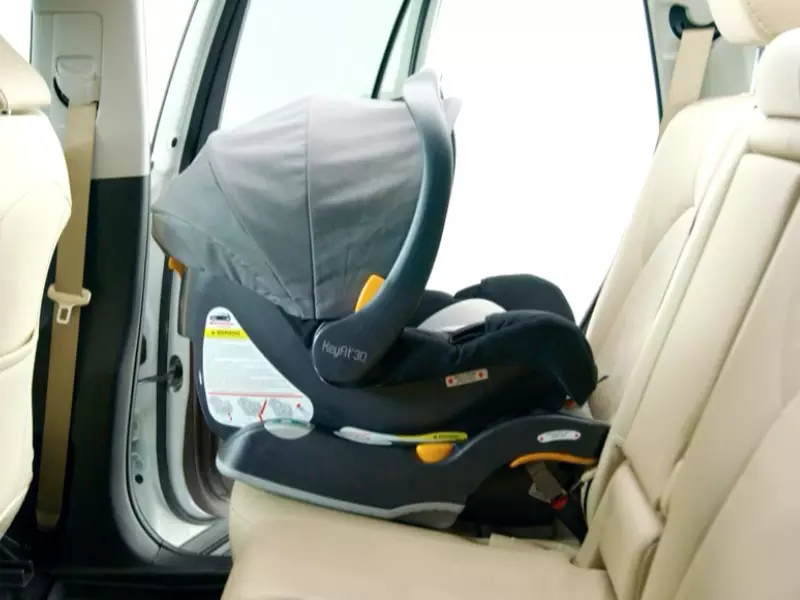
The role of infant car seats in ensuring child safety
An infant car seat plays a vital role in protecting your child during car rides. It is specifically designed to provide maximum safety for infants, who are particularly vulnerable due to their delicate bodies. Here are some key features that make infant car seats indispensable:
- Secure Harness System: Infant car seats are equipped with a secure harness system that keeps your baby snugly fitted in the seat, minimizing the risk of them being thrown around or ejected from the seat in the event of a collision.
- Impact Absorption: These seats are designed with energy-absorbing materials that effectively absorb the impact during a crash, protecting your baby from severe injuries.
- Head and Neck Support: Infants have weak neck muscles, making them susceptible to whiplash injuries. Infant car seats provide proper head and neck support, reducing the risk of such injuries.
- Rear-Facing Positioning: According to experts, rear-facing positioning in an infant car seat is the safest way for babies to travel in a vehicle. It reduces the risk of head, neck, and spinal injuries as it distributes the force of impact across the seat, protecting the most vulnerable areas of your baby’s body.
Legal requirements and regulations for using infant car seats
Before you drive with your little one, it’s crucial to be aware of the legal requirements and regulations regarding infant car seats. These regulations vary from country to country and even state to state. However, ensuring compliance with these laws is paramount as they are designed to prioritize your child’s safety. Here are some general guidelines to keep in mind:
- Age and Weight Limits: Follow the recommended age and weight limits specified by the car seat manufacturer. It’s important to transition your child to a larger seat or booster once they outgrow the infant car seat.
- Proper Installation: Ensure that the car seat is correctly installed using the base and the seat belt or LATCH system. Refer to the car seat manual for specific instructions and make sure it is securely fastened.
- Positioning: In most jurisdictions, infants must be placed in a rear-facing position until a certain age or weight limit. Check the specific regulations in your area to ensure compliance.
- Regular Inspections: Regularly inspect the car seat for any visible damage or signs of wear and tear. Replace the seat if necessary to maintain optimal safety standards.
By understanding the importance of infant car seats and adhering to the legal requirements, you can take significant steps in ensuring your child’s safety and well-being during car journeys.
Factors To Consider When Choosing An Infant Car Seat
An infant car seat is a crucial investment for the safety and protection of your little one while traveling. With numerous options available in the market, it is essential to consider a few factors before making a decision. By ensuring that you pay attention to important features and specifications, you can select the right infant car seat that perfectly meets your child’s needs and keeps them safe during every journey. Let’s dive into the factors you should consider!
Age, Weight, and Height Limitations of Car Seats
When choosing an infant car seat, it is crucial to check the age, weight, and height limitations to ensure that your child fits within the recommended range. These limitations are often specified by the car seat manufacturer and provide guidelines on when to transition to a different type of car seat. It is important to choose a car seat that accommodates your child’s current measurements and leaves room for growth.
Here is an overview of commonly available car seats and their corresponding age, weight, and height limitations:
| Car Seat Type | Age Limitation | Weight Limitation | Height Limitation |
|---|---|---|---|
| Rear-Facing Only Car Seat | From birth to around 1 year | Up to 35 pounds | Up to 32 inches |
| Convertible Car Seat | From birth (rear-facing) and up to 2+ years (forward-facing) | Depending on the model, typically up to 40-50 inches | Depending on the model, typically up to 40-57 inches |
| All-in-One Car Seat | From birth (rear-facing) and up to 10+ years (forward-facing or booster mode) | Depending on the model, typically up to 40-50 pounds | Depends on the model, typically up to 40-57 inches |
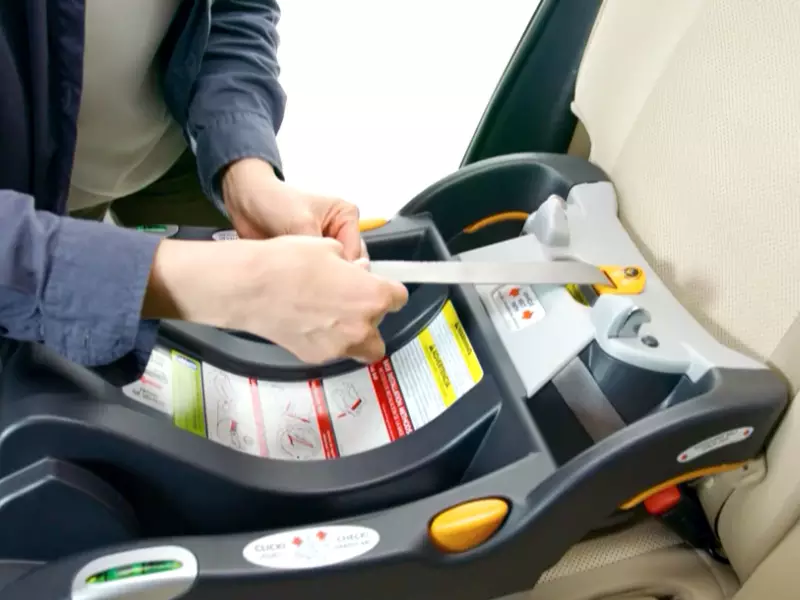
Types of Car Seats Available in the Market
When selecting an infant car seat, it’s crucial to be aware of the various types available in the market. Understanding these options will help you pick the most suitable car seat for your child’s needs. Here are the primary types:
- Rear-Facing Only Car Seats: These car seats are designed exclusively for rear-facing use and are suitable for newborns and infants. They provide the best protection for infants, as they face the rear of the vehicle, absorbing the impact of a crash and supporting the head, neck, and spine.
- Convertible Car Seats: Convertible car seats offer both rear-facing and forward-facing options. They can be used for infants and can later be converted to forward-facing as your child grows. This flexibility allows you to use the same car seat for a longer duration.
- All-in-One Car Seats: All-in-One car seats provide the greatest longevity as they can be used in various configurations, including rear-facing, forward-facing, and eventually as boosters. While they are bulkier than other options, they eliminate the need to purchase multiple car seats for each stage of your child’s growth, saving you money in the long run.
Evaluating Safety Features and Certifications
Another vital aspect to consider when choosing an infant car seat is the safety features and certifications it offers. Look for car seats that come equipped with features such as:
- Five-Point Harness System: A five-point harness keeps your child securely strapped in, distributing crash forces across the strongest parts of the body.
- Side-Impact Protection: Car seats with enhanced side-impact protection add an extra layer of safety, shielding your child from potential injuries in the event of a collision.
- Ease of Installation: Ensure that the car seat is easy to install and comes with clear instructions. Some models also offer features like built-in level indicators and self-retracting LATCH systems for added convenience.
Additionally, check for relevant safety certifications, such as the JPMA (Juvenile Products Manufacturers Association) seal, which signifies that the car seat has undergone rigorous testing to meet industry standards. Look for NHTSA (National Highway Traffic Safety Administration) certifications as well, as they indicate that the car seat meets federal safety regulations.
By considering these factors and doing thorough research, you can find the perfect infant car seat that provides optimal safety and comfort for your precious bundle of joy.
Gathering The Necessary Tools And Materials
When it comes to installing an infant car seat with a base, having the right tools and materials is essential for ensuring a proper and secure installation. In this section, we will discuss the essential tools and recommended materials you need to gather before beginning the installation process.
Essential tools for installing an infant car seat
Before you start installing your infant car seat, make sure you have the following essential tools handy:
- Flathead screwdriver – This tool will be used to tightly secure the base of the car seat onto your vehicle’s seat.
- Phillips screwdriver – You may need this type of screwdriver to assemble certain parts of the car seat or adjust the base’s angle.
- Adjustable wrench – An adjustable wrench is useful for tightening nuts and bolts, ensuring the car seat and base remain firmly in place.
- Towel or blanket – Placing a towel or blanket between the car seat and the base can provide extra support and stability.
- Tape measure – Although not always necessary, a tape measure can help you ensure that the car seat is positioned correctly and at the appropriate angle.
Recommended materials for proper installation
In addition to the essential tools, it is also important to have the following recommended materials on hand:
- Infant car seat with base – Make sure your car seat and base are designed to work together and meet all safety standards.
- User manual – The user manual that comes with your car seat is an invaluable resource. It provides step-by-step instructions specific to your seat’s make and model.
- Vehicle owner’s manual – Familiarize yourself with your vehicle’s owner’s manual, as it contains important information about compatible seating positions and installation methods.
- Latch system or seat belt – Depending on your car seat and vehicle’s capabilities, you will need either a latch system or a seat belt to secure the car seat and base.
- Padding and inserts – Some car seats come with additional padding and inserts for a snug and secure fit, especially if your infant is smaller or younger.
By gathering all the necessary tools and materials beforehand, you can ensure a smooth installation process and provide maximum safety for your little one.
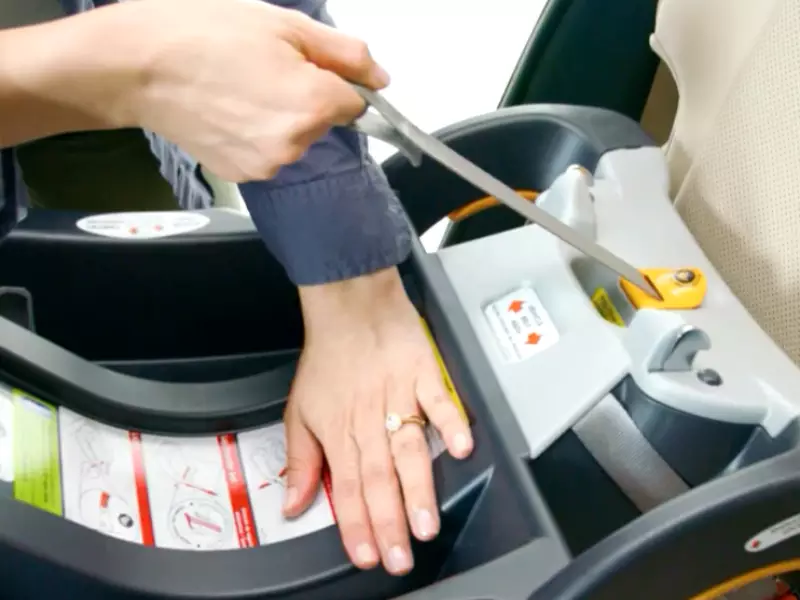
Familiarizing Yourself With The Car Seat And Base
Before installing an infant car seat with a base, it’s vital to understand the various parts and components of both the car seat and the base. This knowledge will not only help you install the seat correctly but also ensure the safety and comfort of your precious little one.
Understanding the Parts and Components of the Infant Car Seat and Base
The infant car seat and base consist of several key parts and components that work together to provide a secure and comfortable environment for your baby. Familiarizing yourself with these elements is the first step towards a successful installation:
- Carrier: This is the main part of the car seat where your baby will be placed. It usually has a handle for easy transportation.
- Base: The base is the foundation of the car seat and is usually installed in your vehicle using the seat belt or the LATCH system.
- LATCH System: LATCH stands for Lower Anchors and Tethers for Children. It is a system that allows you to attach the car seat to the vehicle’s anchors for added stability.
- Adjustable Straps: These straps are used to secure your baby in the car seat. They can be adjusted as your child grows.
- Harness Buckle: The harness buckle keeps your baby securely strapped into the car seat. It should have a quick-release feature for ease of use.
- Harness Adjuster: This is used to tighten or loosen the harness straps to ensure a snug and secure fit for your baby.
- Infant Insert: Some car seats come with an infant insert to provide additional support and comfort for newborns.
Checking for any Defects or Recalls
Before installing the infant car seat with the base, it’s crucial to check for any defects or recalls. Your baby’s safety should always be the top priority. Here’s what you can do to ensure the car seat is in optimal condition:
- Inspect for visible defects: Check the car seat and base for any cracks, loose parts, or signs of wear and tear that might compromise its safety.
- Check for recalls: Visit the manufacturer’s website or the National Highway Traffic Safety Administration’s (NHTSA) website to see if the car seat or base has any recalls or safety notices.
- Register your car seat: It’s highly recommended to register your car seat with the manufacturer. This way, you’ll receive important safety notifications and updates.
By understanding the different parts and components of the infant car seat and base, as well as checking for any defects or recalls, you can ensure a smooth and secure installation process. Taking these steps will provide you with peace of mind, knowing that your little one is safe and protected during every car ride.
Ensuring Proper Fit In Your Vehicle
Installing an infant car seat with a base is an essential step to keep your little one safe and secure while on the road. However, it’s crucial to ensure a proper fit in your vehicle to maximize the car seat’s effectiveness. In this section, we will explore the necessary steps to determine the correct seating position for the car seat and check the compatibility with your vehicle.
Determining the Correct Seating Position for the Car Seat
Before installing your infant car seat, it’s vital to determine the correct seating position in your vehicle. Here are some important factors to consider:
- Choose a seating position that allows for a secure installation and provides easy access for getting your baby in and out of the car seat.
- Ensure that the car seat is installed in the rear-facing position, as this is the safest arrangement for infants.
- Check your vehicle’s manual or consult with a certified Child Passenger Safety Technician (CPST) to identify the best seating position suitable for your car seat.
By carefully considering these factors, you can determine the optimal seating position for your infant car seat, ensuring your little one’s safety and comfort.
Checking the Compatibility of the Car Seat with Your Vehicle
Once you have determined the correct seating position, it’s crucial to check the compatibility between your vehicle and the infant car seat. Here are a few steps to follow:
- Refer to the car seat manufacturer’s instructions to ensure compatibility with your specific make and model of the vehicle.
- Make note of any specific requirements or restrictions mentioned by the manufacturer, such as the allowable vehicle belt type, latch system availability, or any additional features necessary for installation.
- Consult your vehicle’s manual to determine if there are any specific instructions or limitations for installing an infant car seat.
- If you have any doubts or concerns about compatibility, it is always advisable to consult with a CPST to ensure the car seat and your vehicle are compatible.
By checking the compatibility between your vehicle and the infant car seat, you can rest assured that the installation will be secure and provide optimal protection for your precious little one.
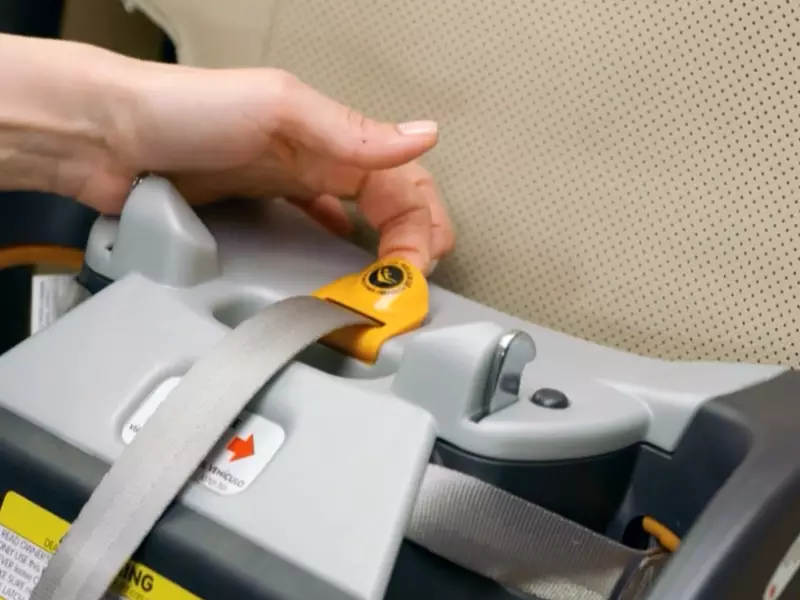
Installing The Base
Installing an infant car seat with a base is an essential step in ensuring the safety and security of your little one during car rides. In this guide, we will walk you through the process of positioning the base in the rear-facing position and securing it using either the vehicle’s seat belts or the LATCH system. Follow these instructions carefully to ensure a proper installation that will provide optimal protection for your baby.
Positioning the base in the rear-facing position
The first step in installing the infant car seat base is to position it in the rear-facing direction. This is crucial as rear-facing car seats are proven to be the safest option for infants. To position the base correctly:
- Locate the designated rear seat in your vehicle where the base will be installed.
- Place the base in the center of the seat, ensuring it is level with the ground. Use the built-in level indicator, usually located on the side of the base, to ensure it is properly aligned.
- Adjust the recline angle of the base according to the specific instructions provided by the car seat manufacturer. This is important to ensure your baby’s comfort and safety during the ride.
By positioning the base in the rear-facing position and ensuring it is properly level and reclined, you are setting the foundation for a secure and safe installation.
Securing the base using the vehicle’s seat belts or LATCH system
Once you have positioned the base correctly, the next step is to secure it in place using either the vehicle’s seat belts or the LATCH (Lower Anchors and Tethers for Children) system. Both options are safe and effective, but it is important to check your car seat’s manual to determine which method is recommended by the manufacturer. Follow these guidelines to secure the base:
- Seat Belt Installation:
- Thread the vehicle’s seat belt through the belt path on the base. Make sure the belt is not twisted and lies flat.
- Buckle the seat belt and adjust it to ensure a snug fit.
- Tighten the seat belt by pulling the shoulder belt or the lap belt, depending on the specific instructions provided by the car seat manufacturer.
- Check the base for any excessive movement by pushing and pulling it from various angles. It should be securely fastened without any significant give.
- LATCH System Installation:
- Locate the lower anchors in your vehicle. These are typically found in the crease between the seat cushion and the seatback or on the backseat. Consult your vehicle’s manual if you are unsure.
- Attach the LATCH connectors on the base to the lower anchors in your vehicle, following the specific instructions provided by the car seat manufacturer.
- Once connected, tighten the LATCH straps by pulling them tightly. Ensure there is no slack or looseness in the straps.
- Again, check the base for any excessive movement by pushing and pulling it from different angles. It should be securely fastened and should not move more than an inch in any direction.
By following these steps and properly securing the base using either the seat belts or the LATCH system, you can have peace of mind knowing that your baby’s car seat is securely installed and ready for a safe journey.
Attaching The Infant Car Seat To The Base
Ensuring that your infant car seat is securely attached to the base is crucial for the safety of your little one during car rides. In this section, we will guide you through the step-by-step process of attaching the infant car seat to the base. By following these instructions, you can have peace of mind knowing that your precious cargo is secure and protected.
Aligning the car seat with the base
The first step in attaching the infant car seat to the base is properly aligning them. This ensures a secure and stable connection. Follow these simple steps:
- Position the base in your vehicle according to the manufacturer’s instructions.
- Place the infant car seat on top of the base, ensuring that the seat’s back is making full contact with the back of the base.
- Check that the level indicator on the base is within the acceptable range. Adjust the base if needed to achieve proper alignment.
By aligning the car seat with the base correctly, you are creating a solid foundation for a safe and secure installation.
Verifying the secure attachment of the car seat
Once you have aligned the car seat with the base, the next step is to verify its secure attachment. These steps will help ensure a firm connection:
- Check for audible clicks or other indicators that signify the car seat has latched onto the base correctly.
- Gently tug the car seat in different directions to test for any movement. If there is excessive play, the car seat may not be properly attached, and you will need to reinstall it.
By taking these steps to verify the secure attachment of the car seat, you can rest assured that your infant will be safe and snug throughout your journey.
Adjusting Straps And Harnesses
One of the most important tasks for parents is ensuring their baby’s safety during car rides. Installing an infant car seat with a base is a crucial step in safeguarding your little one. In this section, we will focus on adjusting the straps and harnesses of the car seat to provide the perfect fit for your baby’s comfort and safety.
Properly positioning the harness on the baby’s body
Correctly positioning the harness on your baby’s body is essential to prevent any potential injuries or discomfort during a car journey. The harness should be snug and secure, but not too tight. Here are the steps to ensure the proper positioning of the harness:
- Place your baby in the car seat, ensuring their back is flush against the backrest.
- Slide the shoulder straps over your baby’s shoulders, making sure they lie flat and do not twist.
- Fasten the harness buckle between your baby’s legs and latch it securely.
- Adjust the chest clip so that it sits at armpit level, ensuring that the straps are not too close or too far from your baby’s body.
By properly positioning the harness on your baby’s body, you can provide optimal support and protection during car rides.
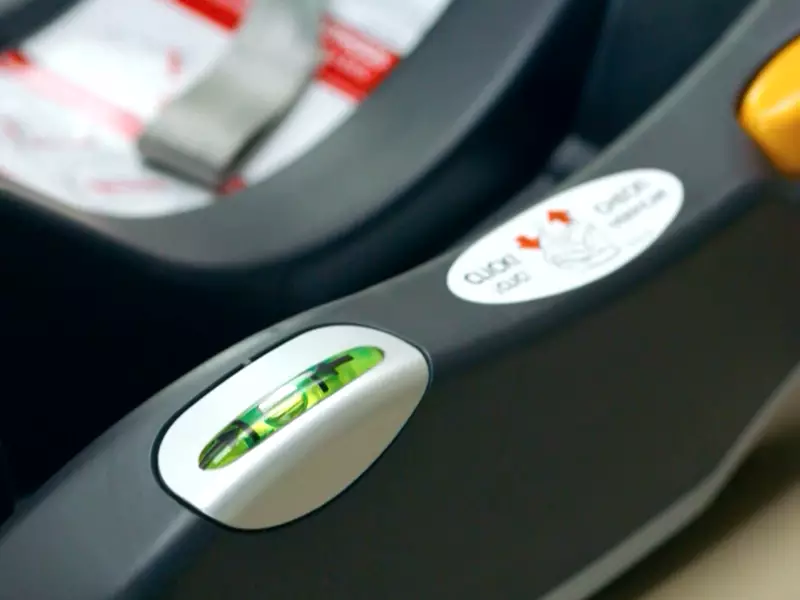
Adjusting the straps for a snug fit and correct tension
The straps on the infant car seat should fit snugly against your baby’s body, with no slack or excessive tension. Here’s how you can adjust the straps for a perfect fit:
- Buckle the harness, ensuring it is secure and snug.
- Check the tightness of the straps by attempting to pinch the webbing near the shoulder. If you can gather excess material, the straps are too loose.
- To tighten the straps, pull the adjuster strap located at the front of the car seat. Ensure the straps lie flat and are not twisted.
- When the straps are properly adjusted, secure the excess strap length in the designated storage slots to prevent tangling.
Remember to check the straps and their tension each time you secure your baby in the car seat, as they can loosen over time.
Ensuring the straps and harnesses of your infant car seat are adjusted correctly is crucial for your baby’s safety and comfort. Take the time to position the harness properly on your baby’s body and adjust the straps for a snug fit and correct tension. By doing so, you can have peace of mind knowing that your little one is secure during every car journey.
Periodic Inspections And Maintenance
Ensuring the safety and proper functioning of your infant car seat and base should be a priority for all parents. Periodic inspections and maintenance play a crucial role in keeping your little one safe during car journeys. By regularly checking the integrity of the car seat and base, as well as cleaning and caring for them properly, you can provide your child with the utmost protection and peace of mind.
Regularly checking the integrity of the car seat and base
The first step in maintaining the safety of your infant car seat and base is to regularly inspect them. This involves checking for any signs of wear and tear, ensuring that all parts are in working order, and verifying that the seat and base have not been involved in any accidents that could compromise their structural integrity.
To perform a thorough inspection, consider the following:
- Check the fabric and harness for any fraying or damage.
- Ensure that the buckle is functioning properly and securely fastens.
- Inspect the base for any cracks or damage that may affect its stability.
- Confirm that the seat is securely attached to the base and does not wobble or move excessively.
By conducting these checks regularly, you can identify any potential issues and address them promptly, ensuring that your infant car seat and base are in optimal condition for your little one’s safety.
Cleaning and caring for the car seat and base
Proper cleaning and maintenance not only enhance the longevity of your infant car seat and base but also contribute to their safety effectiveness. Regularly cleaning your car seat and base helps eliminate dirt, crumbs, and germs that can accumulate over time. Here are some key maintenance and cleaning tips:
- Refer to the manufacturer’s instructions on how to clean and care for your specific car seat and base as they may have specific recommendations.
- Remove the fabric covers, if possible, and gently launder them according to the manufacturer’s instructions. Ensure that they are completely dry before reattaching them.
- Regularly wipe down the hard surfaces of the car seat and base with a mild soap solution or manufacturer-approved cleaner.
- Avoid using harsh chemicals or abrasive cleaning materials that can damage the materials or compromise the integrity of the car seat and base.
By following these cleaning and maintenance practices, you can keep your infant car seat and base clean, hygienic, and in optimal condition.
Periodic inspections and maintenance are essential for keeping your infant car seat and base in top-notch condition. By regularly checking the integrity and conducting proper cleaning and care routines, you can provide your child with the safest and most secure car seat experience. Remember, it is crucial to follow the manufacturer’s instructions and recommendations to ensure the proper maintenance of your specific car seat and base model.
Understanding Correct Usage And Guidelines
Knowing when to transition to a different type of car seat
Your infant will grow faster than you can imagine, and it’s important to stay ahead of their development when it comes to car seat safety. Understanding when to transition to a different type of car seat is crucial for keeping your little one protected on the road.
Most infant car seats are specifically designed for newborns up to a certain weight limit, typically around 30 pounds. Once your baby exceeds this weight limit or outgrows the height requirement, it’s time to consider transitioning to a different type of car seat.
A common transition is to a convertible car seat, which can be used both rear-facing and forward-facing. Convertible car seats are suitable for children who have outgrown their infant car seat but are still too young to safely sit in a forward-facing seat.
When making the transition, it’s essential to carefully read the manufacturer’s guidelines for the new car seat. Each seat will have its own specific weight and height limits, so be sure to select a seat that is appropriate for your child’s age and size.
Following recommendations for rear-facing usage duration
Rear-facing car seats provide the best protection for infants and young children, which is why it is highly recommended to keep your child in a rear-facing position for as long as possible.
The American Academy of Pediatrics (AAP) advises keeping children rear-facing until at least the age of 2, or until they reach the maximum weight or height limit allowed by their car seat. This is because rear-facing seats offer better support for the head, neck, and spine, reducing the risk of severe injury in the event of a crash.
It’s important to note that the specific guidelines for rear-facing usage duration may vary depending on the car seat manufacturer. Always refer to the instruction manual provided by the car seat manufacturer to determine the appropriate rear-facing usage duration for your specific seat.
Remember, safety should always come first when it comes to your child’s car seat. Following the correct usage guidelines and staying informed about when to transition to a different type of car seat will help ensure your little one travels safely on every journey.
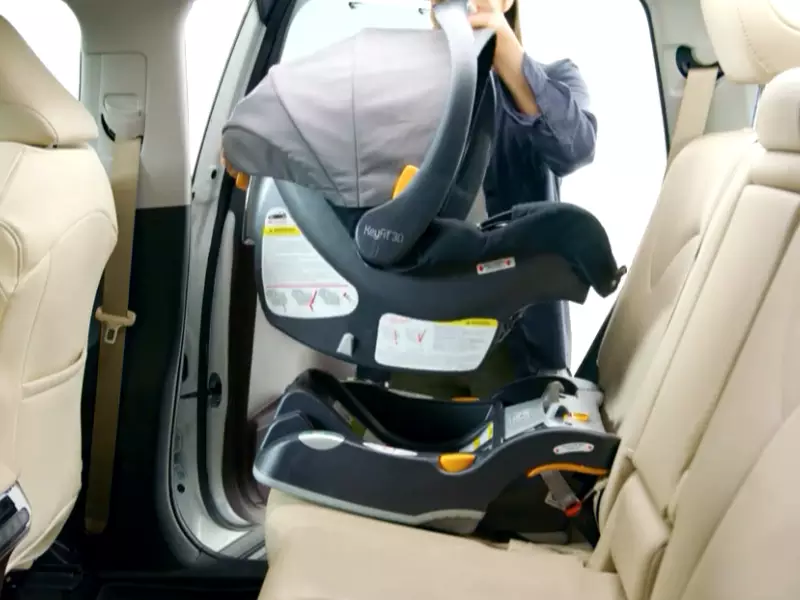
Seeking Professional Help And Advice
When it comes to installing your infant car seat with a base, seeking professional help and advice is highly recommended. Even though many car seat manufacturers provide detailed instructions on how to install their products, it can still be a complex process. Consulting with a certified Child Passenger Safety Technician can ensure that your car seat is properly installed and that your precious little one is safe.
Consulting with a certified Child Passenger Safety Technician
One of the best resources you can turn to when it comes to infant car seat installation is a certified Child Passenger Safety Technician (CPST). These professionals have undergone rigorous training and certification to become experts in car seat safety. They are well-versed in the different car seat models available and are familiar with the latest safety regulations and guidelines.
When you consult with a CPST, they will not only help you install your infant car seat properly but also educate you on its correct usage. They can guide you on how to properly secure your child in the car seat, adjust the harness straps correctly, and ensure that the base is securely installed in your vehicle.
CPSTs can also provide valuable advice on car seat compatibility with your specific vehicle. They can help you choose the right car seat based on your child’s age, weight, and height, as well as the dimensions of your vehicle. This personalized guidance can give you peace of mind knowing that you have made the best choice for your child’s safety.
Addressing common installation and usage difficulties
Installing an infant car seat with a base can sometimes pose challenges. Difficulties may arise due to the complexity of the installation process, different vehicle types, or simply lack of experience. That’s where the expertise of a CPST comes in handy.
A CPST can troubleshoot common installation problems and provide solutions. They are familiar with various vehicle models and can quickly identify any unique challenges you may face with your specific vehicle. They can help you overcome issues such as incompatible seat belt systems, difficult LATCH anchor points, or uneven seat surfaces.
Not only can CPSTs assist with installation difficulties, but they can also address common usage difficulties. They can teach you how to correctly adjust the car seat’s recline angle, properly position the chest clip, and secure the straps snugly but not too tight.
Recap Of The Importance Of Proper Installation
Reiterating the significance of correctly installing an infant car seat
As a responsible parent or caregiver, it is crucial to understand the importance of proper installation when it comes to your little one’s safety. Installing an infant car seat correctly is not only a legal requirement in many countries, but it is also a matter of ensuring the well-being of your child while traveling.
According to recent studies, over 75% of car seats are not installed correctly. This alarming statistic highlights the need for parents and caregivers to prioritize child safety and take the necessary steps to ensure each infant car seat is properly installed.
Encouraging parents and caregivers to prioritize child safety while traveling
Keeping your precious bundle of joy safe during travel should be a top priority. The risks associated with improper installation cannot be ignored, as they may increase the chances of injuries or even fatalities in the event of an accident. Fortunately, by following a few simple steps and adhering to the manufacturer’s instructions, you can significantly reduce these risks and provide the safest possible environment for your little one.
Here are some essential points to keep in mind when installing an infant car seat with a base:
- Read the instruction manual: Before you proceed with the installation, take the time to read the car seat and car manufacturer’s instruction manuals thoroughly. Familiarize yourself with any specific guidelines or requirements to ensure a proper fit.
- Choose an appropriate location: Selecting the right location for the infant car seat is vital. The center rear seat is generally considered the safest spot in the vehicle, as it offers maximum protection from side-impact collisions.
- Secure the base tightly: Properly install and secure the car seat base using either the seat belt or LATCH system. Ensure a snug fit with minimal side-to-side or front-to-back movement.
- Double-check for correct installation: Once the car seat is securely in place, double-check all connections and attachment points to verify proper installation. This includes ensuring the harness straps are adjusted correctly, with the chest clip at armpit level and snugly fastened.
- Regularly inspect and maintain: Car seats can experience wear and tear over time. Regularly inspect the seat for any damage or signs of deterioration, and replace any worn-out parts promptly. Maintain the integrity of the installation by periodically checking the tightness of the base and adjusting as necessary.
By adhering to these guidelines, you can greatly enhance your child’s safety during travel. Remember, proper installation of an infant car seat is not just a recommended practice, but rather a crucial step in safeguarding your little one’s well-being. Make child safety your top priority and instill peace of mind, knowing you have taken all necessary precautions to protect your most precious passenger.
Frequently Asked Questions On How To Install Infant Car Seat With Base
How Do You Install An Infant Car Seat Base?
To install an infant car seat base, follow these steps:
1. Place the base in the desired position in your vehicle.
2. Make sure the base is level.
3. Thread the seat belt through the base and buckle it.
4. Tighten the seat belt securely.
5. Check the base for stability by giving it a firm shake.
How Should An Infant Car Seat Be Placed?
Place an infant car seat in the rear-facing position for maximum safety. Position it in the back seat of the vehicle, away from active airbags. Use the seat’s built-in harness to secure the baby snugly. Follow the car seat manufacturer’s instructions for proper installation.
Never put a car seat in the front seat.
Should Baby Seat Be Behind Driver Or Passenger?
When installing a baby seat, it is recommended to place it behind the driver to ensure better visibility and supervision.
What Angle Should Your Car Seat Base Be Set At?
The car seat base should be set at a 30 to 45-degree angle for proper installation and safety.
Conclusion
Properly installing an infant car seat with a base is crucial for the safety of your little one during car rides. By following the manufacturer’s instructions and taking the time to ensure a secure installation, you can have peace of mind knowing that your baby is protected.
Remember to regularly check the car seat’s fit, adjust as needed, and consult a professional if you have any concerns. Happy travels, and safe journeys!
